Making compost at home can be a great activity to do with the kids, or to simply do to get some very fertile soil that you can plant whatever you want to plant in. It is all organic material and will give you strong and healthy plants. There are a lot of different sources you can use for this project, that include yard waste, food left overs and other things that you might not be thinking of. It is not only beneficial for your plants for you to use compost, it is also a very environmentally-friendly material to use. If you haven’t done this before, here is the ultimate guide on how to make compost at home, which should answer most of the questions you may have.
How Does it Work?
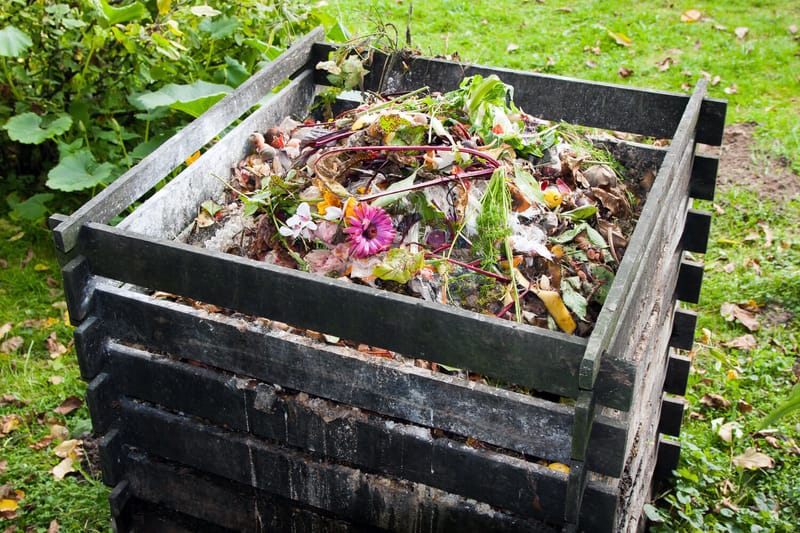
Although it can have magical effects on your plants, it is in fact not magic. You use various waste sources, leave it to compost and using some of nature’s magic, you’ll end up with very nutrient rich fertilizer, the best kind – completely organic. Worms, microbes and insects and more will be hard at work making the compost for you, and while you make not want to have to call an exterminator if pests make it inside your home, they’ll do great things to your compost pile.
Bacteria is probably the biggest work bee in this process, and they are working day and night on breaking down your leftovers, which in turn means that the pile ends up not just being really quite warm, but that it also produces carbon dioxide. As they get to work, the core temperature of the compost pile can reach 158 degrees fahrenheit (70 degrees celsius).
The final product you end up with is also the excrements of worms and insects, after eating what you threw out. They help in a lot of ways, and what they leave will help bind the rest of the contents of the pile better together. Although it might be weird to think about, what it actually is, think about the amazing effects it can have on whatever you are growing.
Stages
There are different stages of the composting process that your pile will go through, more exactly 4 different stages. We will only cover these very briefly but have included relevant links for you to explore if you care to read more about each one of them. The four stages are mesophilic phase, thermophilic phase, cooling and curing. In your compost pile, these different stages could be happening continuously rather than sequentially, since some of the matter will be more processed than other.
The heat in the pile comes from the microorganisms that take in the carbon, which in turn is turned into energy and carbon dioxide, and in the process, heat is also produced. The piles can even get so warm that they let off steam in the winter.
It is during the thermophilic stage that microorganisms will cause the pile to get up to 158 degrees warm. It is not ideal to have the temperature going all the way up to that point, and this specific stage will start happening fairly quickly.
Then the second stage will follow suit, where thermophilic microorganisms will turn out to be very active and will end up producing so much heat. This process will continue up to about 70 degree Celsius, although such high temperature is not common and not desirable in backyard compost.
This stage of heating will take place very quickly and could last for up to a few days, weeks and even months. It will remain localized at the upper portion of any backyard compost bin wherein fresh materials are being added and where in batch compost, entire mass will become thermophilic at once.
When this stage is done, the whole thing goes back into the cooling face at which point the temperature drops too. In your pile of waste, you have some that is easier to break down than others, and that means that some parts may be turned into compost before others are.
The curing phase is a long one and is important for the final product.
How Long Does It Take?

The answer to that question is not quite that simple, as it depends on a couple of different factors including the insects that are used for the composting process, some work faster than others but may not necessarily be providing you with compost instead. While the black soldier fly is good at eating its way through your pile of waste, they’re not good if you wish to have a nice pile of compost in the end, since they may just fly away and leave their excrement elsewhere. If you have a large amount of these flies working on your pile, it can be gone in as little as 3 weeks.
However, if you wish to get compost, and get it fast, a good solution is to use a worm bin. Check out these steps on worm bin composting. Doing it this way, you can have compost in as little as 1-3 months, which is why it’s a method that is gaining a lot of popularity, since it is faster than the other alternative.
If you simply wish to turn your waste into compost without any work, you can also do that, but expect that it takes up to 12 months to get the final product you were hoping for. It may be achieved in as little as 3 months, but several factors including moisture, temperature and the composition of the pile all have an impact on the process. There are more factors that affect how long the whole thing will take to be over with.
The real answer is therefore, that you are likely to have to wait 6-12 months if you simply dump your compostable waste in a pile and wait for nature to do its thing. A little thing such as turning over the content can greatly influence the amount of time the process takes.
The amount insects and bacteria chewing away at your leftovers influences how long it takes.
Benefits of Composting
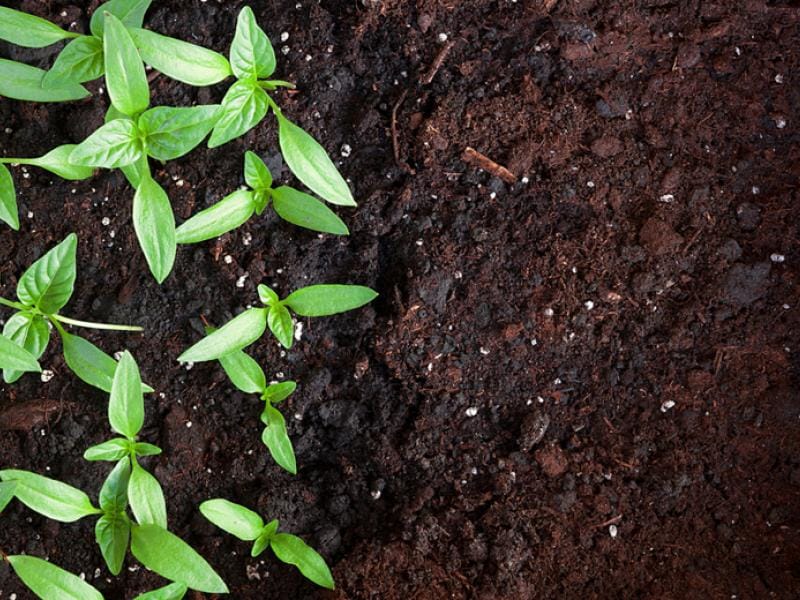
You’re wondering why so many people choose to go about it this way to enrich the soil rather than using the commercial alternatives you can buy at a store. Well, it’s because this organic way comes with a lot of benefits. As mentioned, there are benefits for your soil and the environment, but that is not it. There are more reasons to use compost.
It will help increase the organic matter that you have in the soil, and provides a lot of nutrients back to the plants that they can absorb and use to grow. If you have soils that are high in their concentration of clay, this helps counteract it and allow them to better drain when being watered.
It also means you will have less garbage to dispose of, which would otherwise need to be transported to the dump site, either by you or the dump truck. If you live in an area where you pay for garbage bags, you will now be paying less as a consequence. Composting is a good way to not just become a little more green, but also save you money on both fertilizer and lower garbage bills too.
If this is stuff that you would otherwise have taken to the dump site, you’ll now save yourself some dollars on gas from not having to do it, and lower the burden on your landfill.
By increasing the soils ability to absorb water, you’re also saving a little on your water bill, and won’t need to turn on your irrigation system quite as often, if you choose to use it as mulch, according to Earth911.
So How do You Go About Starting a Pile?
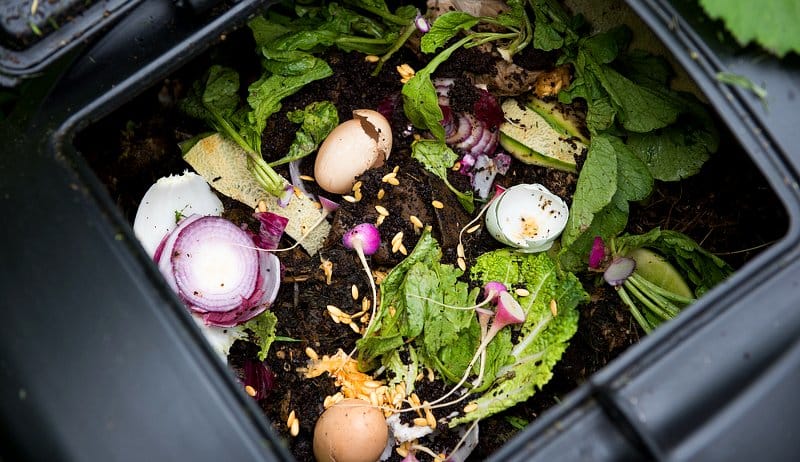
Be sure to read the different pages that we got this information from that include Rodale’s, Gardening Know How and DIY Network. For your convenience, here are the different steps so you can start getting the various benefits that were mentioned in the previous section. Starting a compost pile is not that hard.
Find a good spot in your backyard where there is enough space to make the pile. The waste you use will be placed directly on the earth which will make it easier for the worms, bacteria and other organisms to gain access and start working.
You will want to lay the brown materials at the bottom, so it is about a couple of inches deep. Why? There will be moisture that accumulates in the pile and by doing this, you can make sure the moisture content does not get too great. Here’s a guide to which brown materials you can use, which include eggshells, straw, paper and more. The same way you want your home’s drainage system to work, it also serves a purpose to make sure the drainage works for your compost.
When you add other materials on top, it should be done in layers, ranging from dry to moist materials, which will help ensure that the pile is more or less equally moist all over. Moist materials include food scraps, tea bags and more. A better spread of the different types of waste will help avoid clumping together of things that will simply means it’ll take longer to decompose.
Afterwards, manure is added, which means grass clippings, clover and other nitrogen sources. If you just cut a tree down, what you are left with is also very nitrogen rich materials.
You will want to make sure the pile does not dry out completely, so you can water it on occasion. If it starts to look dry, add some water. You can also let it have access to rain water on occasion, if you don’t want to water it.
Go ahead and cover the compost with plastic sheeting or something else, which helps to keep moisture and heat inside. If you don’t do that, you’re not making sure that the moisture stays inside, and if it rains heavily, it could be too much for your pile. There’s a fine line between some water and it being too soaked.
When a few weeks have passed, you should be turning the pile, which you can do with either a pitchfork or a shovel, and this helps provide the necessary air that the insects and microorganisms use for the process.
Tips
By now you know the basic steps you can use to start providing much needed nutrients to your plants, whether they’ve already been planted or you’re planning on creating a vegetable garden. We’ve compiled additional tips that may help you with the project. Head over to Planet Natural and get more tips.
We already mentioned that the way you compost will have a huge impact on how long the whole process will take, and buying a good composting been will do wonders.
The spot you choose for composting should have good drainage, which is helped on the way by correctly layering the pile. If you have newspaper or simply white paper that is lying around that you would otherwise throw out, you should know that these serve as great sources of dry material for your bin. It should preferably be shredded if you want the process to happen as fast as possible.
Composting is one of the simplest methods of adding nutrients to your plants, which can help to fuel their growth and restore their vitality. What’s great is that composting is free and is definitely easy to prepare and most of all, it is good for the environment. Here are some tips and tricks when it comes to composting.
[bctt tweet=”Composting is one of the simplest methods of adding nutrients to your plants.” username=”ContractorHelp”]
Ideally, your compost pile should have the right pH balance, which can be monitored, and ideally the pH range should be between 5.5 and 8, meanin it is better that it is a bit more acidic.
When you end up with the final composted pile of soil, you will wonder where it all went, and that’s because you will only receive about half the volume that you initially put out as trash, because it all gets a lot denser with all the processes that are happening.
Green materials are the ones that contain more moisture, like food scraps, and you need to know that since that is the case, if you add more moisture filled materials, you won’t need to water the pile as often.
[bctt tweet=”A compost bin that works well can produce temperatures of up to 170 degrees Fahrenheit.” username=”ContractorHelp”]
What Can Be Composted?
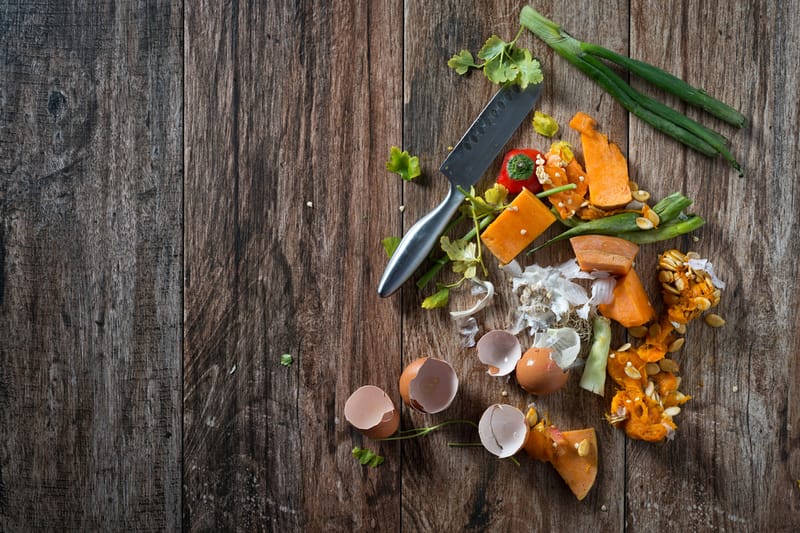
What can you in fact compost, and what is it better not to? For someone who is just starting out, it is less important that you calculate the correct ratios of organic material, instead just make sure there’s more carbon materials than those high in nitrogen. This is how you can add nitrogen, if you need to. What is good to know is that grat clippings should be counteracted with shredded newspaper or other sources of carbon.
Here are some of the most common sources of carbon containing materials:

These are the things that contain a lot of nitrogen.
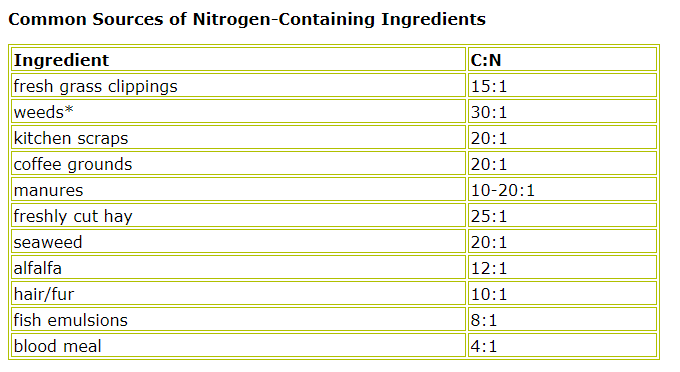
What Not to Compost
After going through what you can compost, there are things you should know too that it isn’t good to compost. There are things you need to make sure not to add, and unfortunately people don’t always think about it before they simply throw it into the pile. Be sure you don’t make the mistake of composting these things.
[bctt tweet=”There are things you should not include in your compost pile. Read what they are.” username=”ContractorHelp”]
Bread products do not belong in the compost pile, and this is not just limited to bread, but also cake, pasta or other things that you have baked. They tend to encourage unwanted pests to make your pile their home.
Diseased plants should be thrown away rather than infesting your perfectly healthy compost pile, or you will simply risk that all the bad bacteria are transferred.
While it may seem weird that you can use newspaper in your compost pile, you shouldn’t be adding magazines, catalogs and other types of printed-paper. There’s a lot of different chemical that were used in their production process that aren’t healthy for your pile.
Don’t include animal or human feces, meat products and cooking oil. They either pose a risk of inviting the wrong animals and pests, or simply can be a significant health risk. Another thing that will attract pests is milk, so you shouldn’t include milk-based products.
Wood should only be included if it is untreated, or there will simply be chemicals in it that aren’t good for your compost.
Although it is very specific, do not include walnuts as they have juglone.
Inorganic materials, such as plastic, also do not belong in your compost, and it probably also contains a lot of chemicals that aren’t good for the pile.
Best Worms for Composting
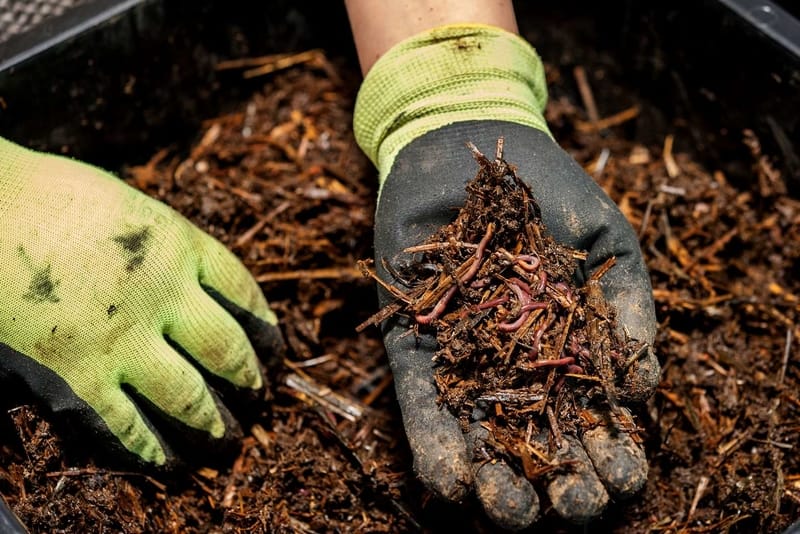
When you want to take your composting to the next level, you should know there are different worms that will be better or worse to add to the mixture. Better worms will simply get the job done quicker. You should not make the mistake of believing all worms are equally good for the purpose. There are actually more than 4000 different species of worms, in case you were wondering. If you are advanced and add worms to your pile, make sure to add the right ones.
Red wigglers, which can be bought here, are the best types of worm for composting. These guys will beat all the other types that you were looking at.
European night crawlers aren’t quite up to the level of red wigglers, but they’re still very good at the job.
African night crawlers can also be good under the right circumstances. While they’re as good as red wigglers, they have a different issue and that is they cannot deal with cold temperatures very well, so if you live in an area that has a tendency to get cold temperatures, they simply won’t cut it.
Canadian night crawlers are not the ones you should be using, if you plan on manually adding more worms to your whole mix. They’re not only hard to keep alive, but they just don’t do what you want them to.
Temperatures
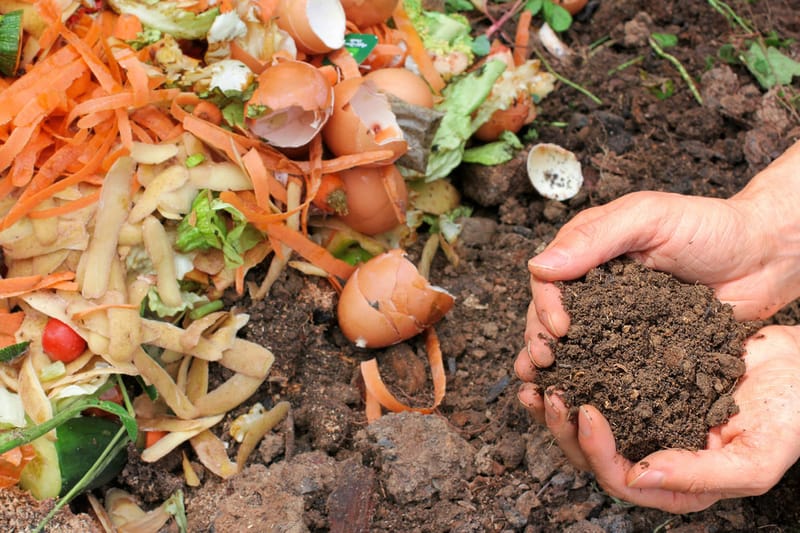
Temperature changes in compost is a good indication that something is going on. We explained how heat is a result of the processes that happen with the microorganisms in your whole mixture. The temperature inside your pile also can be used to see how far along the pile is. If you’re measuring the temperature, you need to make sure you don’t just do it in the outer layer but that you can get all the way in, where it is likely to be warmer.
When you see the pile approaching 120 degrees, you know that what you did is working, and the moisture and nitrogen in the pile has contributed to good growth of the bacteria that breakdown the materials, and you can pad yourself on the back for getting this far. When you’re measuring the temperature, you shouldn’t just be doing it one place, but use the thermometer to get readings from different places.
It is not uncommon that the temperature gets up to 120 degrees after no more than a couple of days as the bacteria start doing their magic. The further out you get in terms of layers, the lower the temperature will be, as more heat is lost.
What Can Be Found In A Compost Bin?
There are a lot of different nutrients in a pile that is decomposing. All of these, which will be added back to the soil afterwards, when you choose to use compost for whatever purpose.
Phosphorus, nitrogen and potassium are all good fertilizers, and your compost will be containing large amounts of them too.
Commercial fertilizers often do not contain a lot of the helpful ingredients contained in compost, which include iron, copper, magnesium, sulfur, zinc, boron and more. You can read what each of them will do for the plants in your garden.
Besides being rich in all these things often not found in commercial products, they help regulate the pH level of the soil to one that plants grow better in and improve its texture too.
Activities for Kids
A good way to engage kids in the activity is by giving them their own container or bin, where they will slowly see how the waste is being turned into soil. It is also a good way to teach them about environmentally-friendly practices all over. It also teaches them responsibility that they need to make sure to turn it once in a while. You can even make your own bin for them to use, which can be as simple as a plastic bin with holes in it for air circulation. It does not need to be more advanced than that.
Kids are fascinated by things that move, and that includes worms. If they’re allowed to do worm composting, and you either go out and find your own or order some, you’ll be surprised to see the fascination in their eyes.
Kitchen Containers
If you do not always wish to go out to the pile and throw away the waste you have, there are different kitchen containers you can consider for the purpose. They come in different sizes, and there are more than the ones we have included here, but this should give you an idea to go off.
OXO Compost Bin is one of the smaller options at just 0.75 gallon. If you get this, you’ll also know that you need to empty it quite often. The Epica Stainless Steel Compost Bin contains 1.3 gallon, and is therefore 73% bigger.
Sometimes, it might make more sense to throw in leftovers and food scraps into an accessible bin. These days, more and more people are using kitchen composters because of its convenience. If you are thinking of doing the same, here are some of the best bins that you may want to check out. If you think you need something bigger, there’s the Exaco Kitchen Compost Waste Collector which can contain up to 2.4 gallon of your waste.
Accelerator Recipe
The time it takes to compost depends on a lot of things, as well as you making sure the pH-value is in the right range, which is by adding a good combination of brown materials and materials with a good amount of nitrogen in them.
There are some additional things that can help you make it go faster. For example, the smaller the individual pieces of waste are, the quicker it goes. That means if you chop things up, it decomposes faster. Shred or chop big things to make them smaller. The smaller it is, the faster it goes, although it will also take up time to do the chopping, so you may only want to do a reasonable job at it.
When you’re making the different layers of the pile, you can make sure that each layer is fairly wet. No water means no rapid growth of bacteria, and if you have built the pile correctly, the excess water will be drained anyway. Make sure to check the pile so it doesn’t end up drying out. If it seems dry, pour more water on it.
How to Speed Up The Process With Aerators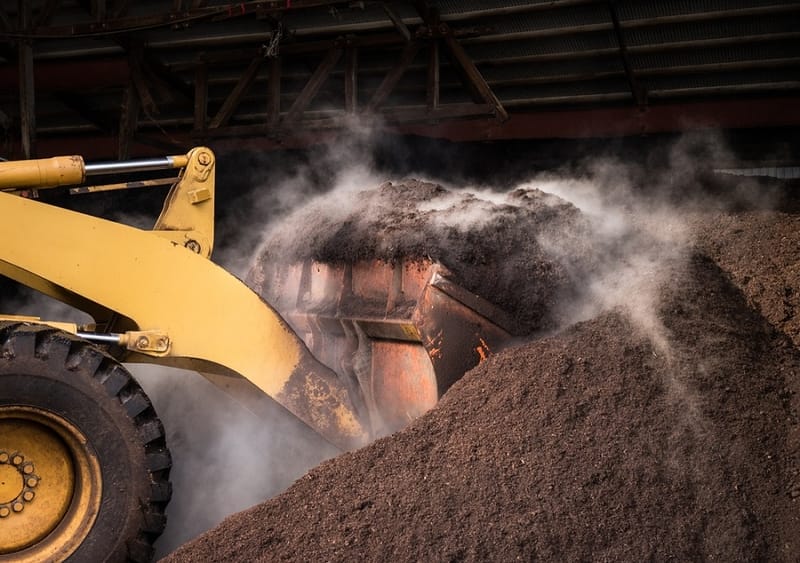
No matter how you choose to compost – if it’s just in a pile outside or in some sort of container, aerating it will speed up the whole thing. The microorganisms need air for the process, and while it may be counter intuitive that adding air to the pile keeps it warm, it will be a sign that the microorganisms are more active, which they can’t be without oxygen.
If you want to be fancy, you can use a compost aerator for the purpose, but anything that adds air to the equation works.
Make sure to watch how to best use it so that everything is mixed nice and consistently without leaving a big mess.
How Often Should You Turn It?
The more material you have in your pile, the more often you should also think about turning it. Turning it every 3 to 7 days is a good rule of thumb that you can use, which won’t keep you too busy but which will still yield very good results.
If your pile begins to smell bad, you see pest infestations or it suddenly seems like everything has come to a haul, it may be time to turn it. While it may not be fun to turn over a smelly pile, it needs to be done.
Composting In An Apartment
Not everyone has a lot of space or a backyard where they can do these projects in, and they’ll need to do it in an apartment instead. This should, however, not keep you from composting. You can use the containers we talked about in an earlier section and do it there. If you do it properly, you won’t have any issues with pests or rodents getting into the mix.
Even if you live in a small place, it’s still possible to get into composting, and it can be added to the potted plants around your apartment. If nothing else, it’s a nice project and it can be given to a friend otherwise, who might be able to use it.
Science Behind
If you really want to understand the science behind composting, we encourage you to watch this video.